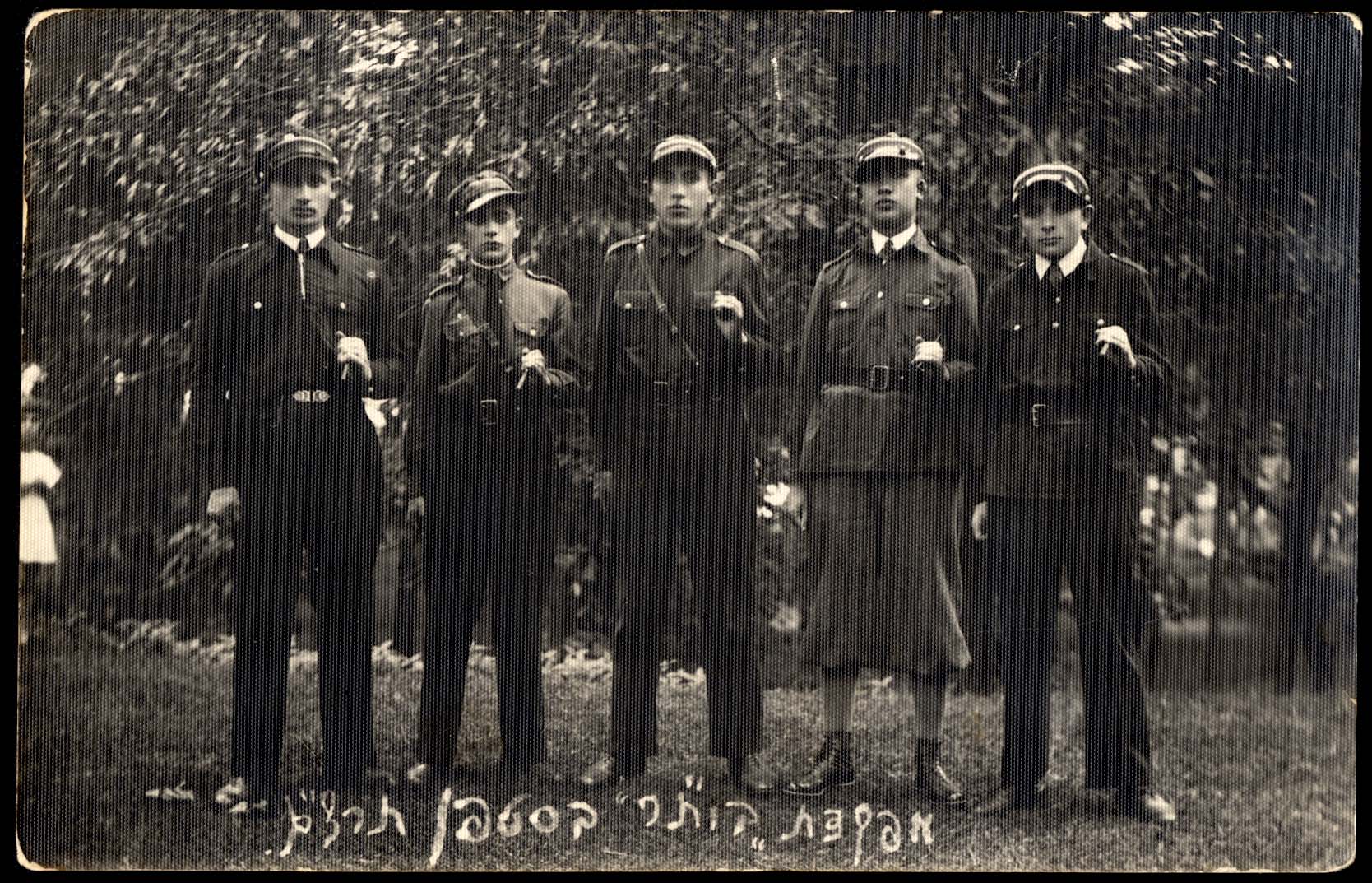

Stepań

After World War I, Stepań was incorporated into the Second Polish Republic. In 1921, Jews comprised approximately 33 percent of the town's 4,064 residents.
In the interwar period, local Jews were mostly petty merchants and artisans. Several Jews were mill owners or large-scale grain and cattle merchants, while others rented out rooms to vacationers. Numerous Zionist parties and youth movements (e.g., Hashomer Hatzair, Beitar, Mizrahi) were active in Stepań. Tarbut, the Zionist Hebrew-language network of educational institutions, operated a school and maintained a library in the town. There was also a yeshiva named Yavneh. The town was home to a Zionist HeHalutz pioneer-training commune.
In September 1939, with the arrival of the Red Army in the aftermath of the Molotov-Ribbentrop Pact, Stepań became part of Soviet Ukraine. Some Jews from German-occupied western Poland found refuge in the town. Following the establishment of Soviet rule, the Tarbut school adopted the Soviet curriculum, and Yiddish replaced Hebrew as the language of instruction. The wealthier Jews, who were regarded by the Soviets as opponents of the new regime, were deported to Siberia. By mid-1941, the town was home to an estimated 1,600 Jews.
The Germans occupied Stepań on July 17, 1941. During the shelling of the town, several Jews were killed, and many houses were damaged.
In the summer and fall of 1941, the German authorities implemented a number of anti-Jewish measures in Stepań: Jews were required to wear distinctive badges (initially an armband with the Star of David, later a yellow circle on their clothes), recruited for forced labor (mostly repairing the bridge over the Horyn River), and forbidden to leave the town. The Germans harassed the Jews, cutting off the beards of elderly men. Upon the orders of Beckmann, chief of the Gendarmerie (the German rural police), the Jews had to hand over all their gold and valuables. Eventually, their fur coats, cattle, and horses were confiscated, as well.
In early October 1941, a ghetto was established in the town. It was surrounded with a wooden fence that was topped with barbed wire. Another fence divided the ghetto into two sections: the synagogue and the adjacent street were reserved for adult men under the age of 55, while the nearby streets housed the women, children, and the elderly. A small group of skilled workers was allowed to live outside the ghetto. Shortly after the establishment of the ghetto, Jews from the surrounding villages – Chorost, Kryczylsk, Wołosza, Wielke Werbcze, and Kazimirka – were also resettled there. Altogether, there were approximately 2,000 Jews in the ghetto.
The Judenrat, which had been established in the summer, was put in charge of the ghetto. Avraham Guz was elected head of the Judenrat, and Josef Vaks became his deputy. However, Guz stepped down under pressure from Vaks, who then assumed his position. A Jewish police force was established, as well. A large number of Jewish males were sent to a labor camp in Kostopol. The ghetto inmates suffered from hunger (despite the existence of a soup kitchen) and severe overcrowding.
The Stepań Ghetto was liquidated on August 25 (or, according to some other testimonies, on August 22 or 24), 1942: On the eve of the liquidation, a group of 10 Jews, including Josef Vaks and some other members of the local intelligentsia, were shot dead by Gendarmerie chief Beckmann near the Gendarmerie building. On the next day, some fifty Jews, who were either incapable of walking or had tried to run away, were killed inside the ghetto. Several hundred Jews managed to escape, while the rest of the inmates were driven to Kostopol and shot in the forest near the village of Korczewie.
Gendarmes and Ukrainian auxiliary policemen combed the area for Jews who had fled or gone into hiding. One mass shooting of Jews captured during these operations took place in September 1942 near the village of Kolonia (present-day Kalinovka) outside Stepań. In the subsequent roundups, some 50-100 Jews who had been found hiding were shot near the Gendarmerie building and at the Jewish cemetery of Stepań.
Stepań was liberated by the Red Army on January 12, 1944.


